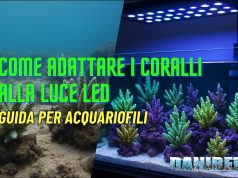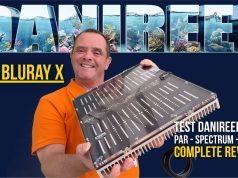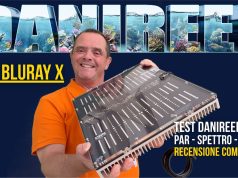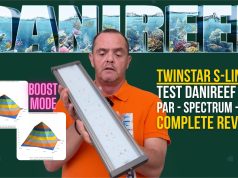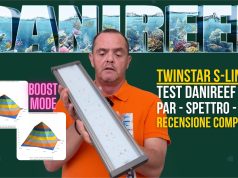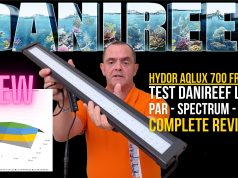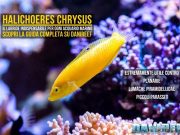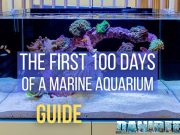Our new DaniReef LAB work method for PAR measurement
During late nights on our forum, we’ve often wondered how to reliably compare PAR values from different fixtures. Until now, we’ve been using Apogee’s Quantum Meter MQ-510.
The Quantum Meter MQ-510 measures PAR—expressed as PFFD, or Photosynthetic Photon Flux Density, in μmol m⁻² s⁻¹. Since the device is calibrated for underwater use, measurements taken in air must be divided by 1.32 (the immersion factor). Because no water is present in our tests, we apply this correction. The values we report are always accurate.

So we built a 70 × 70 cm base with 17 fiducial points for positioning the MQ-510 sensor. To set the fixture, we used risers at 20, 40, and 60 cm—ensuring consistent sensor-to-fixture spacing. This setup lets us generate spatial curves that are comparable across different fixtures at set distances. Note that distance is measured from the base of the sensor to the base of the fixture. In reality, this distance must be reduced by 3.5 cm (sensor cylinder height) and increased by 0.5 cm (spacer height under the fixture).
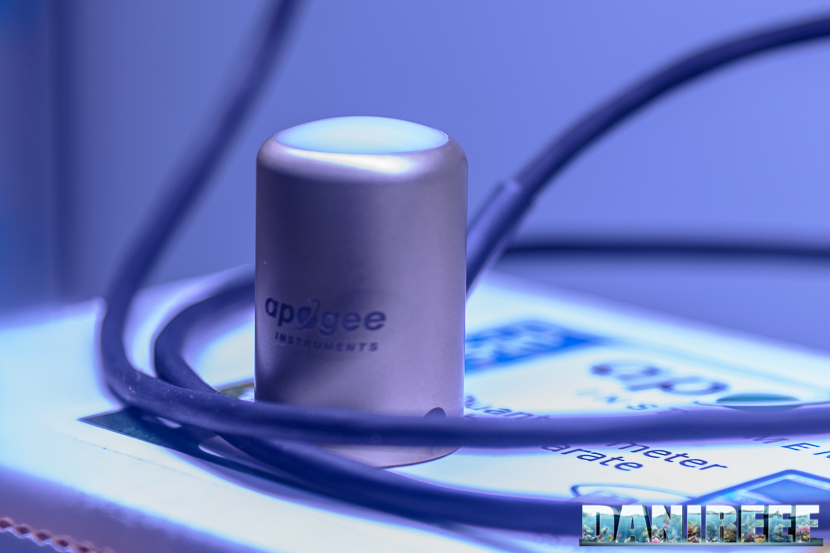
Altogether, measurements are taken at 17, 37, and 57 cm in air, and the correction factor is applied.
We also incorporated ITC’s new PARwise PRO, which reads PAR, analyzes spectrum, and—most importantly—measures cPUR. cPUR (Coral Photosynthetically Usable Radiation) is a light metric specifically designed for coral health. According to ITC, raw PAR doesn’t tell you whether the light measured is actually usable by corals. You may have high PAR levels concentrated in spectral regions corals can’t use.
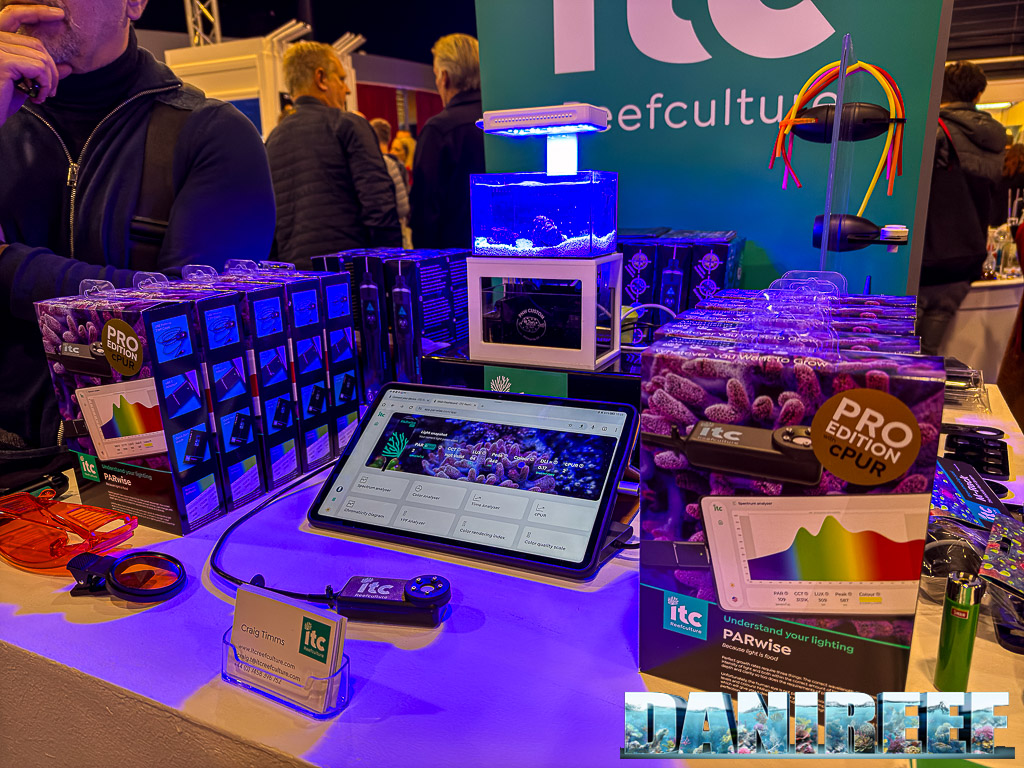
cPUR covers only the wavelengths and intensities corals can actually utilize, excluding those not effectively employed in photosynthesis or fluorescent proteins. Of course, this is an average measure.
With the latest PARwise PRO software, we can also measure many other interesting characteristics—from light spectrum to pigment activation. We’ll feature all that data in our upcoming analysis
PAR Measurement at 17 cm Distance
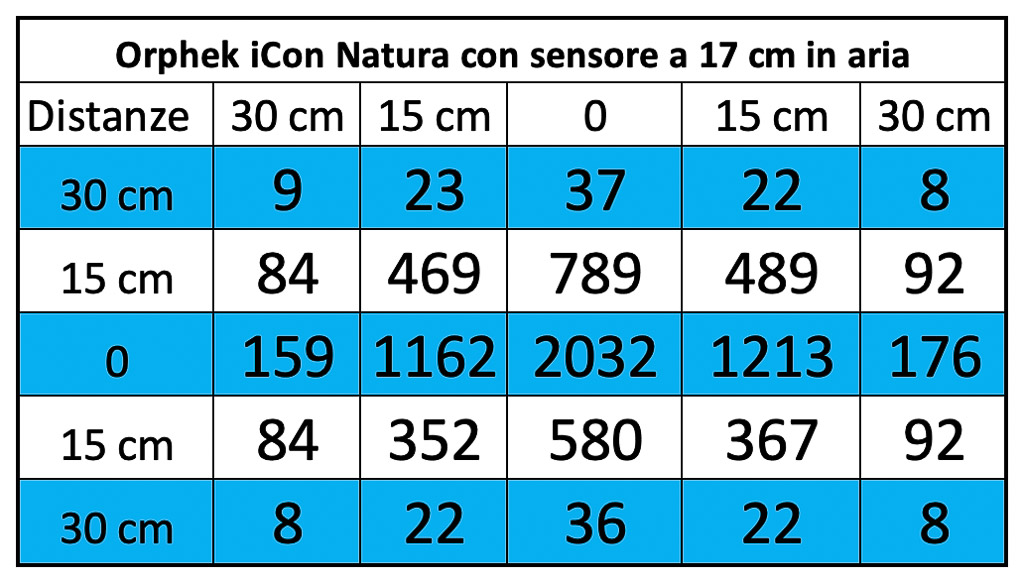
Here is the corresponding graph, shown using our classic scale—identical for every lighting fixture—allowing us to compare similar fixtures.

The first measurement is characterized by a limited distance between the fixture and the sensor. The PAR values are very high in the center and show the typical “circus tent” shape. This is expected, considering the size of the fixture, which measures 37×20 cm.
PAR Measurement at 37 cm Distance
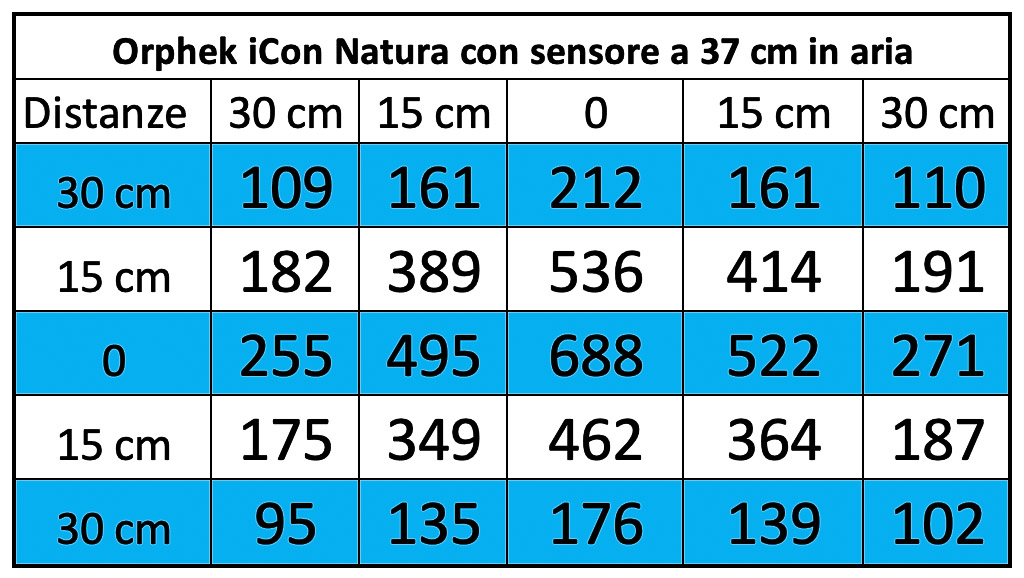
Here is the corresponding graph.
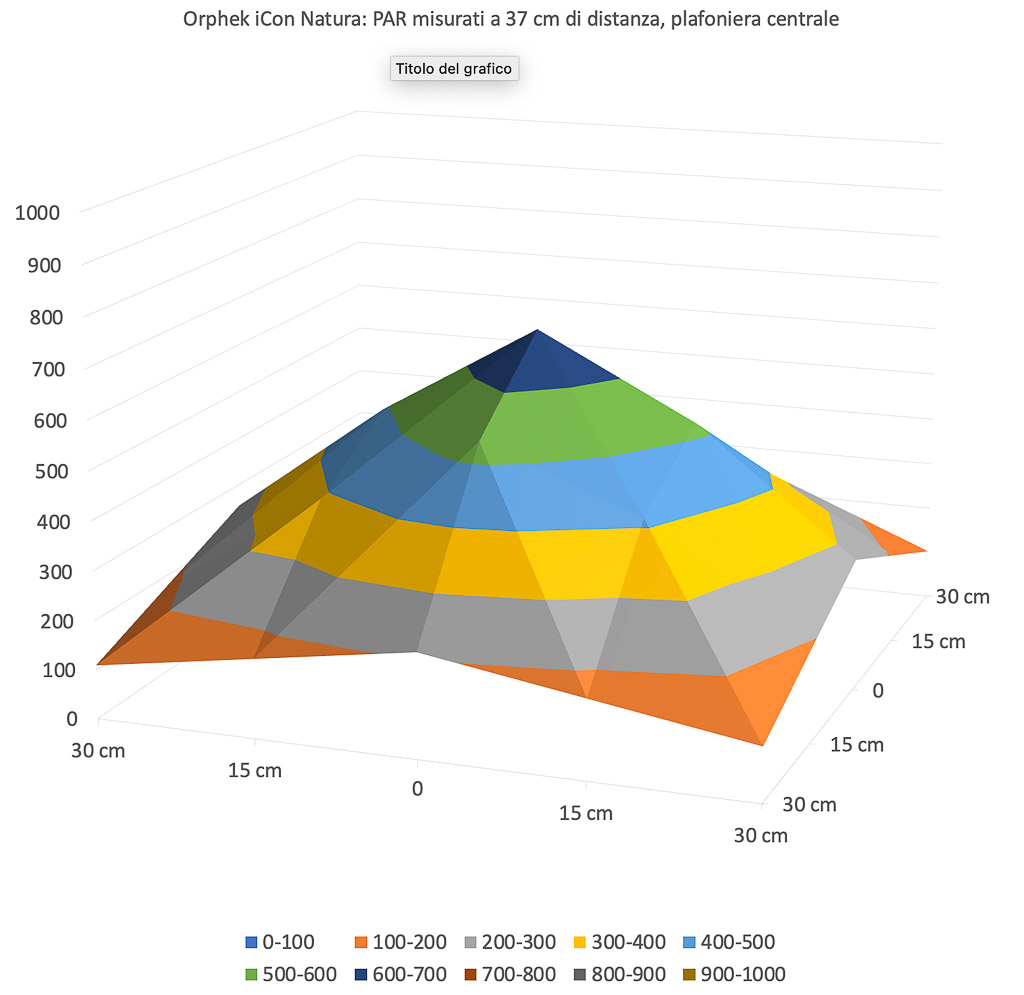
Increasing the space between the fixture and the sensor, the curve becomes more uniform. The peak value remains very high. The central value drops from 2032 to 688 μmol m⁻² s⁻¹.
PAR Measurement at 57 cm Distance
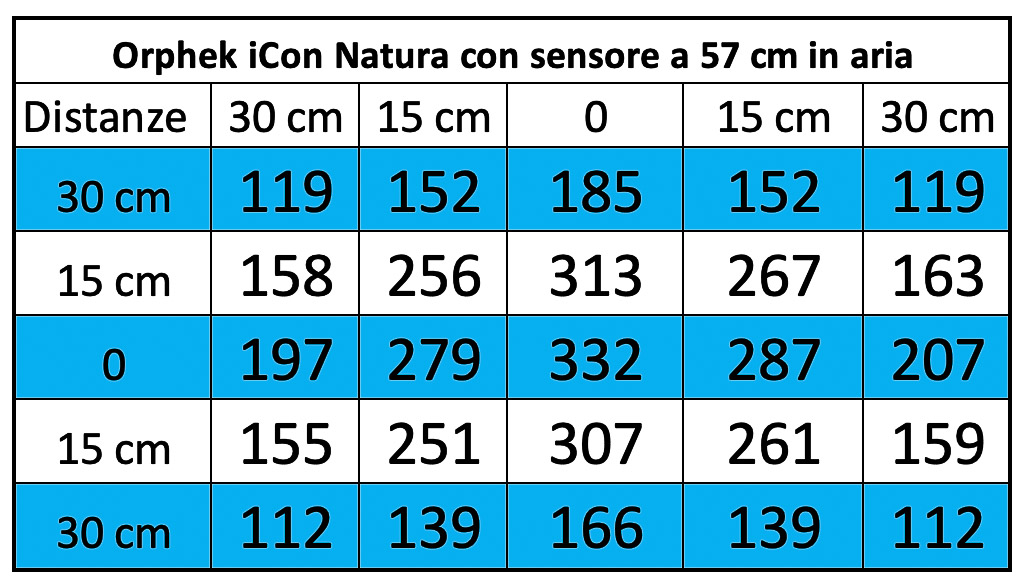
Here is the corresponding graph.
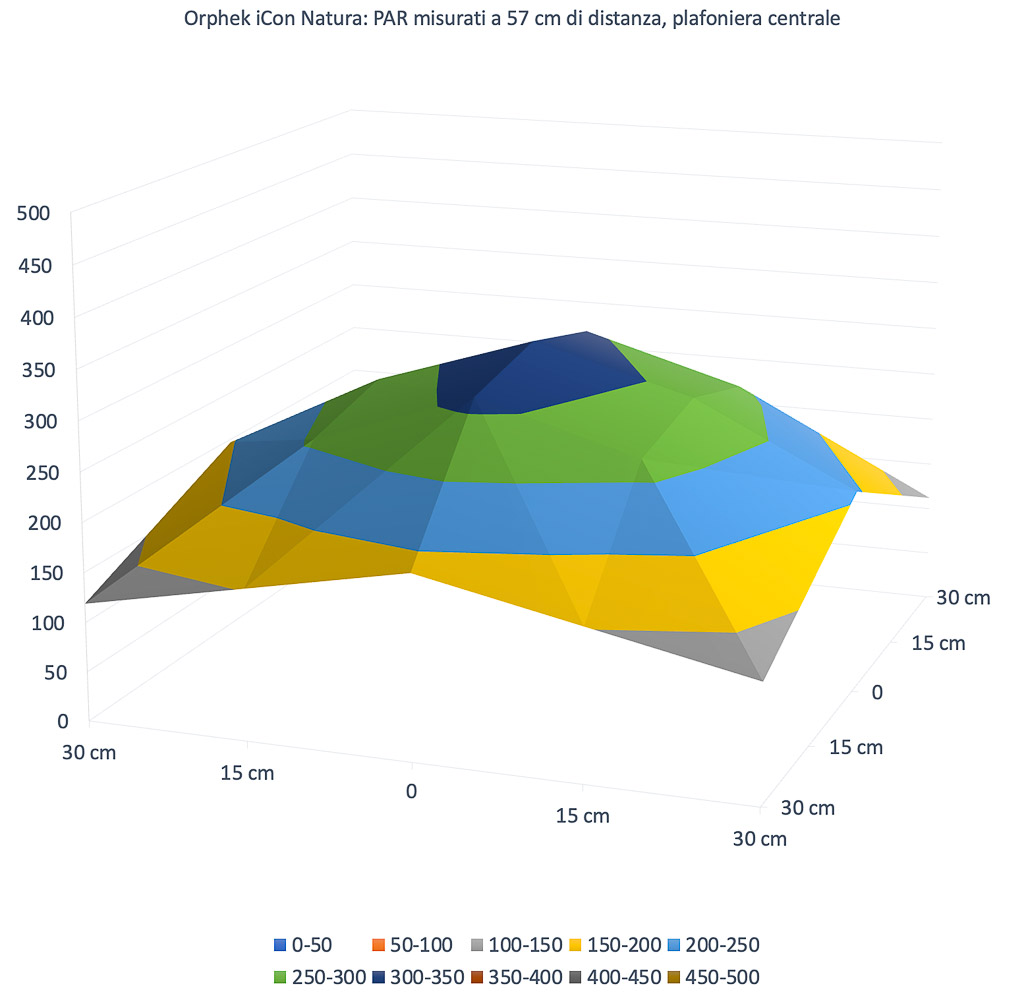
Just by looking at the graph, we can see full coverage with high PAR levels, especially considering this is from a distance of 57 cm from the light fixture. An incredible result in terms of coverage. The central value further drops from 2032 to 688 to 332 μmol m⁻² s⁻¹.
Central PAR Values in the Different Setups
Let’s continue with our technical assessments. Below is a graph showing the drop in central PAR values across the three tested distances.
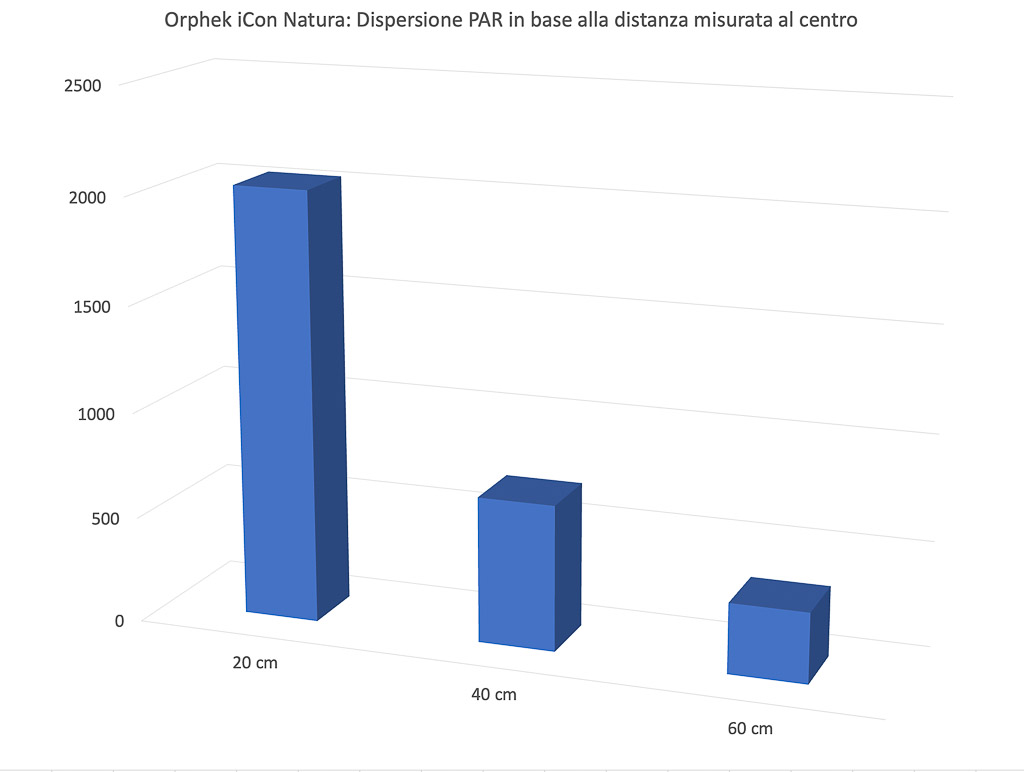
Energy Variation of the Orphek Natura iCon Based on Distance
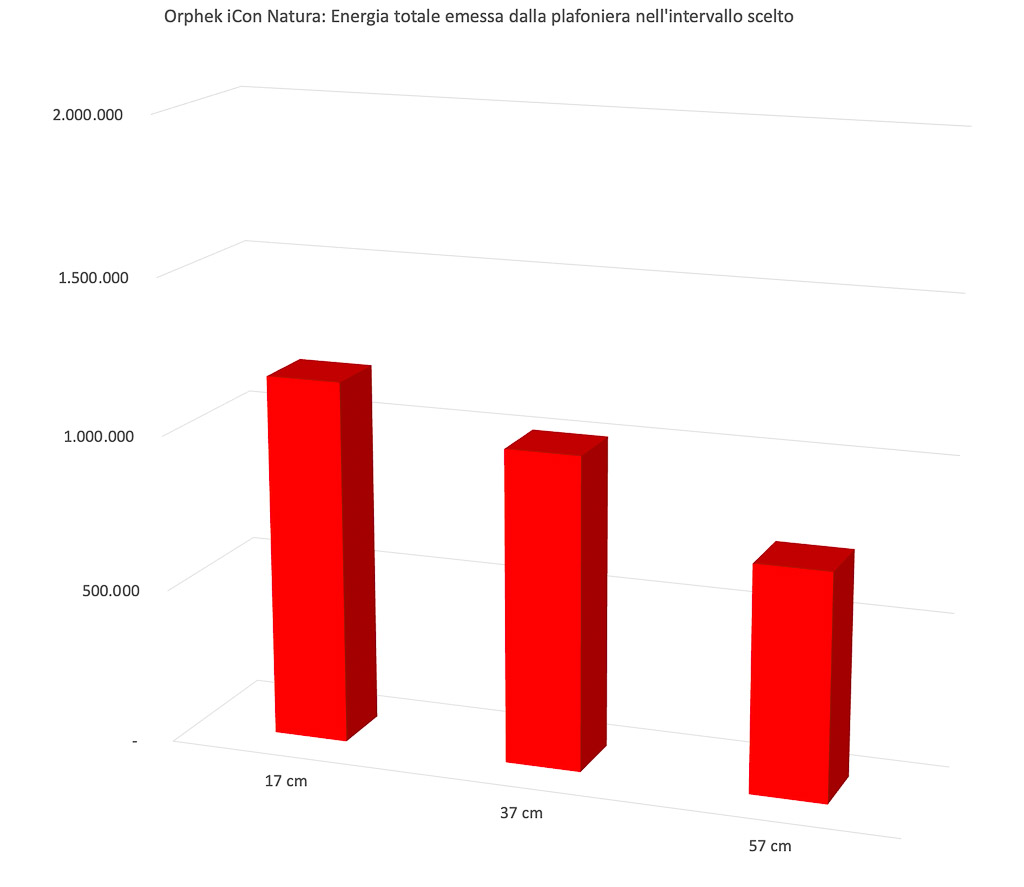
This, in my opinion, is the most meaningful and comparable data point: the energy variation. We calculated the volume under the three surfaces previously shown. Obviously, the further the fixture is, the lower the PAR values, but the values also drop because the light illuminates a larger area. This method accounts for the total luminous energy within a hypothetical 60 cm square area under the fixture.
The three values—1,171,000, 1,010,000, and 730,000—take on a different meaning compared to the central readings. While the central values drop significantly with distance, the overall energy decreases less because most of the fixture’s “concentrated” light remains in the center. That’s the theory.
For the Orphek Natura iCon, the values remain incredibly consistent—evidence that a 60 cm wide coverage area seems perfect for these fixtures. Of course, depending on the corals being kept, this is ideal for tanks up to 60 cm wide, and still good for aquariums 70 or even 80 cm wide. Keep in mind that while the coverage is good, the light beams will hit the sides at an angle, meaning the effect on corals will differ from wider fixtures like the ATI Straton, GNC BluRay X, and Philips CoralCare.
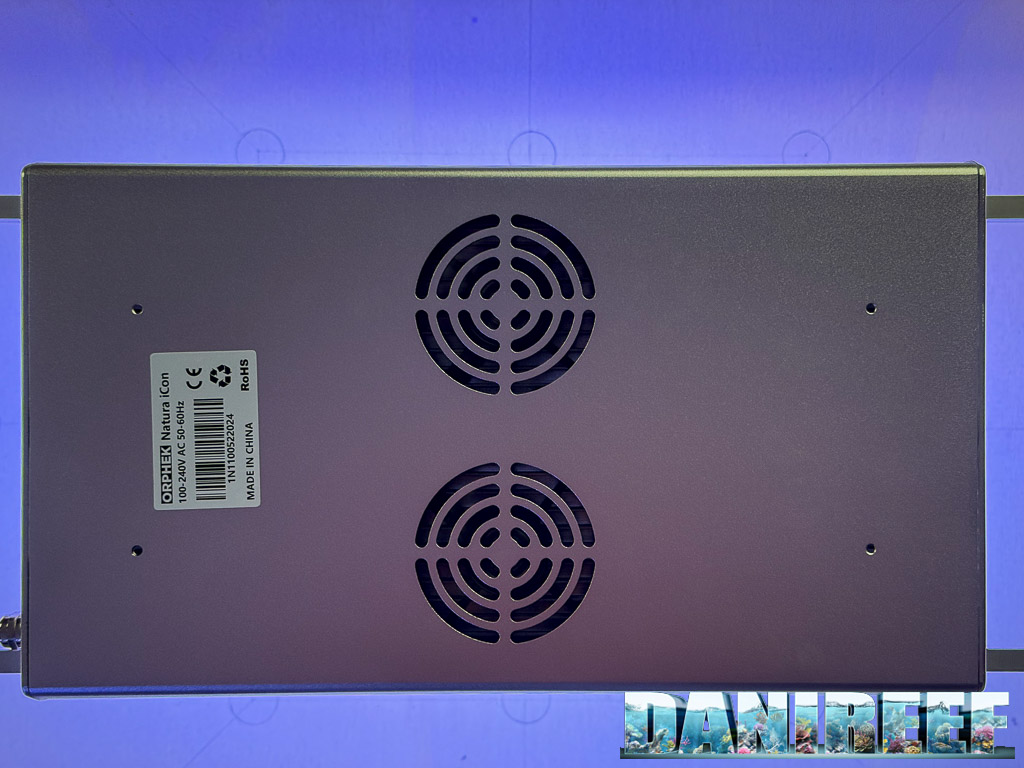
Light Spectrum of the Orphek Natura iCon
Thanks to the use of ITC’s PARwise PRO, we also measured other values, including the light spectrum and the crucial cPUR.
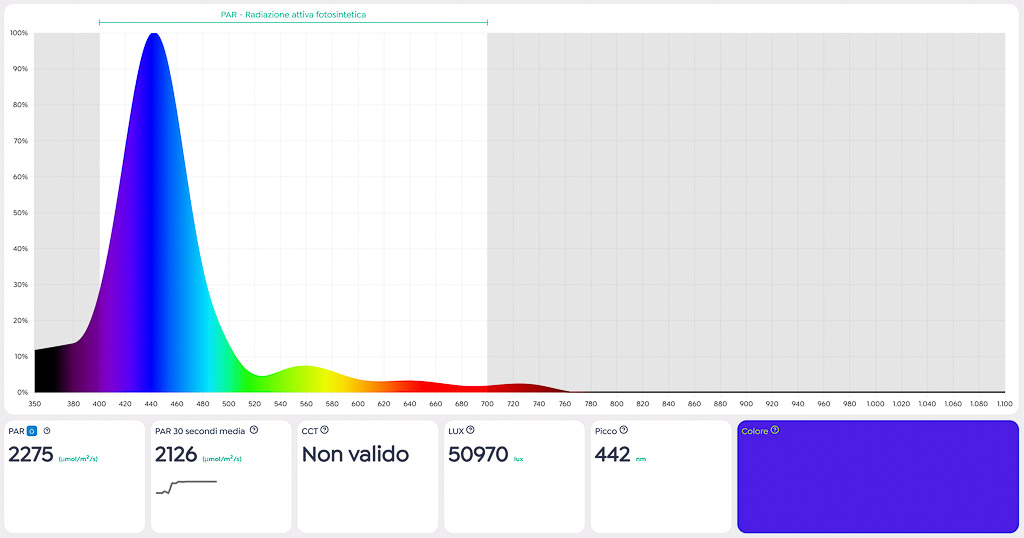
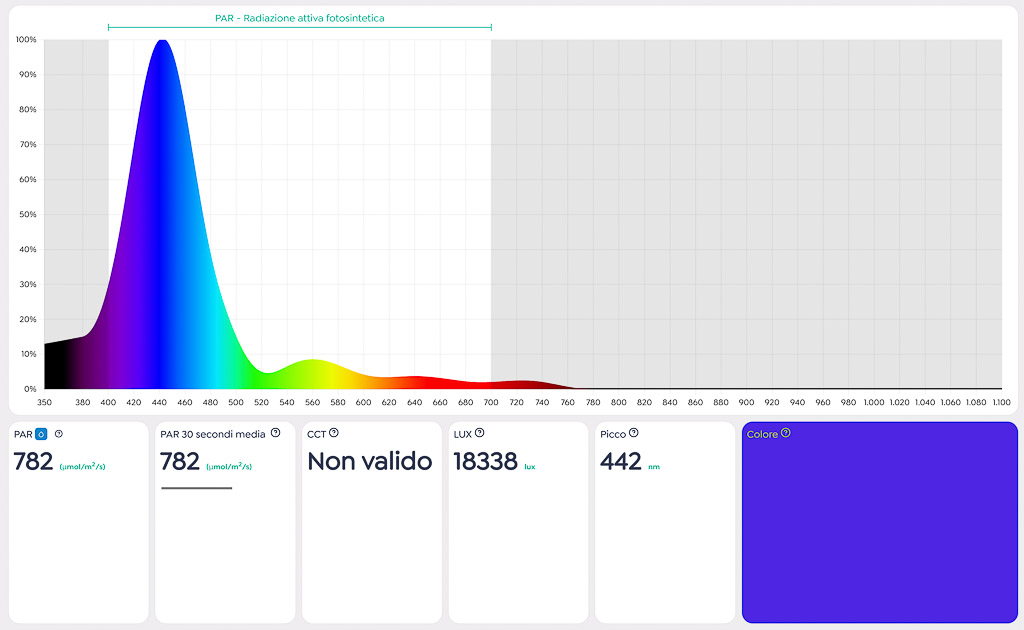
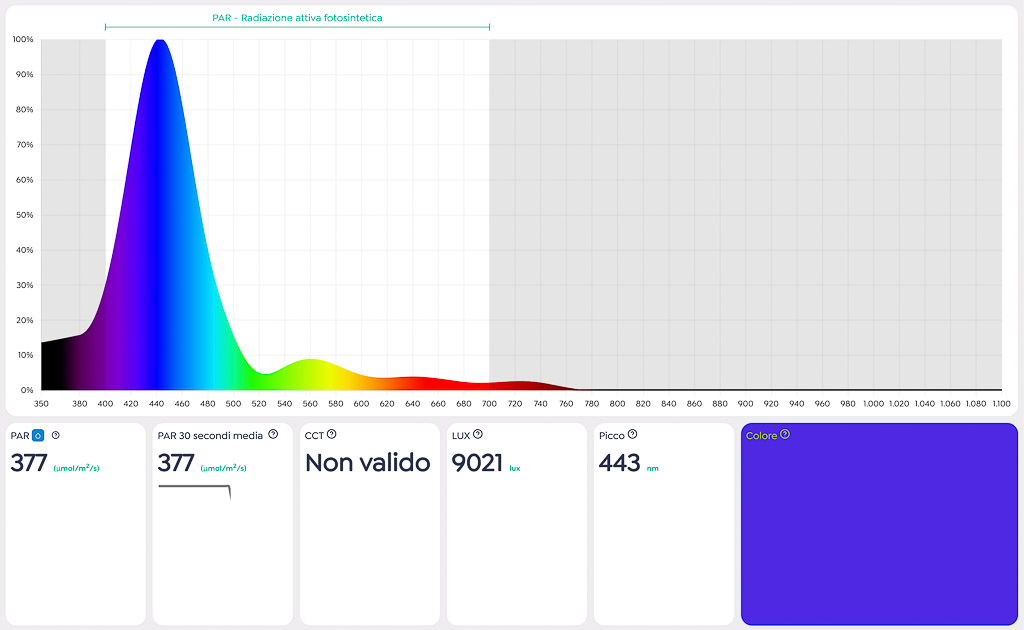
Above are the light spectrum readings from the PARwise PRO. Of course, the spectrum is created using discrete point measurements, so the curve isn’t as smooth as what a more advanced instrument would provide. However, it’s accurate enough to show a clear dominance around 442 nm, where the PAR peaks.
The spectrum appears virtually identical across all three distances, and the maximum PAR and lux values are summarized in the table below:
| Distance from center | PAR | LUX |
| 17 cm | 2275 μmol m-2 s-1 | 50970 lux |
| 37 cm | 782 μmol m-2 s-1 | 18338 lux |
| 57 cm | 377 μmol m-2 s-1 | 9021 lux |
These center values are roughly 10% higher than those measured with the Apogee MQ-510.
Orphek Natura iCon’s cPUR
Next, we look at the green curve, which shows the cPUR—the Coral Photosynthetically Usable Radiation. cPUR is a measurement designed specifically for corals. According to ITC, PAR values alone don’t indicate if the light is truly useful for coral growth. You could have high PAR levels concentrated in the wrong part of the spectrum.
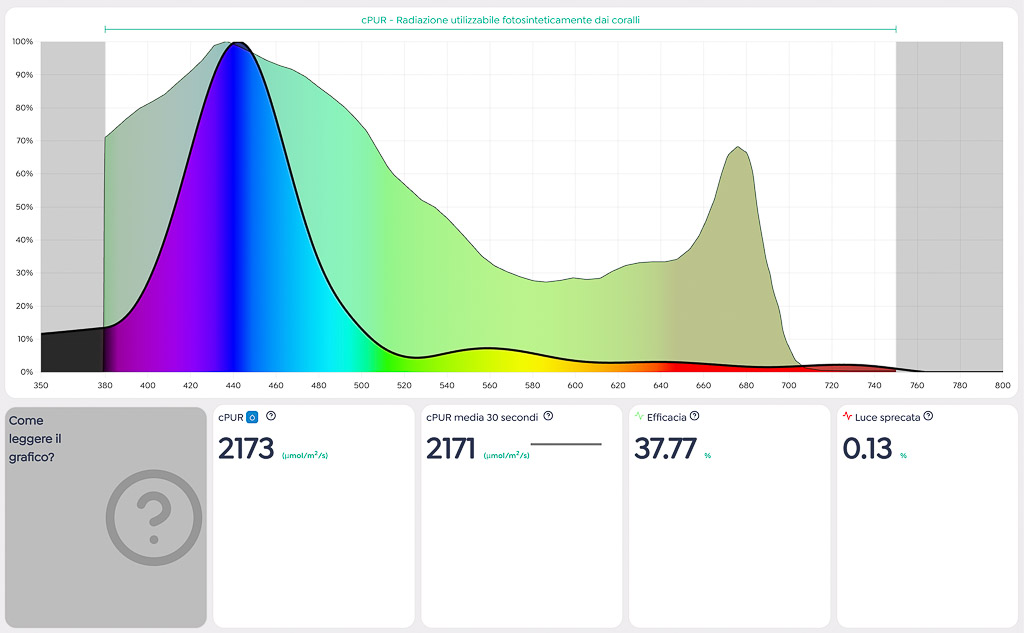
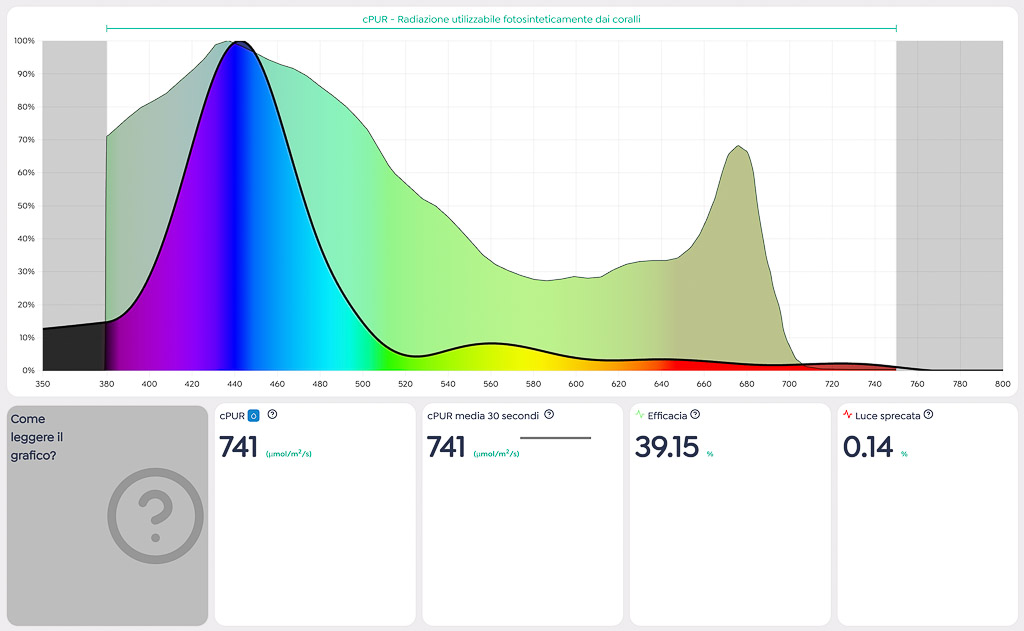
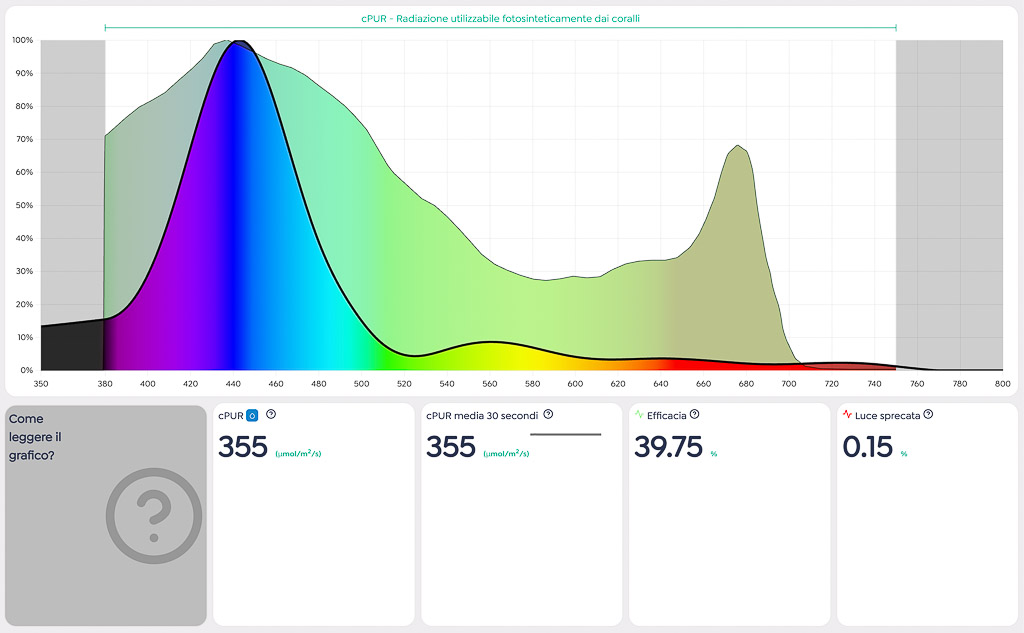
We can see that the spectrum of the Orphek Natura iCon fits entirely below the hypothetical cPUR curve. In practice, there’s no wasted light outside the range usable by corals—and that’s what really matters. The measurement indicates that only about 0.13% to 0.15% of the total power is emitted in a range that corals cannot use.
Pigments Excited by the Orphek Natura iCon
The new Parwise PRO software also allows us to explore the pigments excited by the light. We’ll take these values at face value for now and compare them with other fixtures in future reviews.
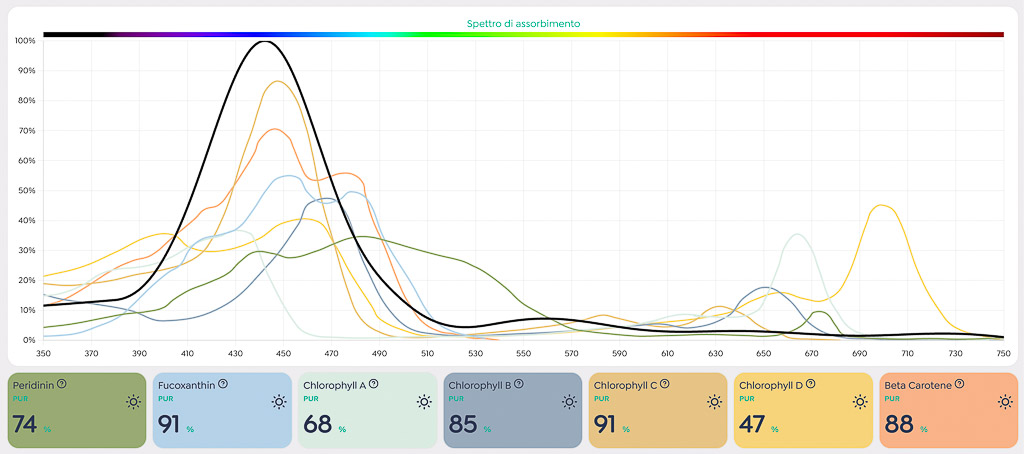
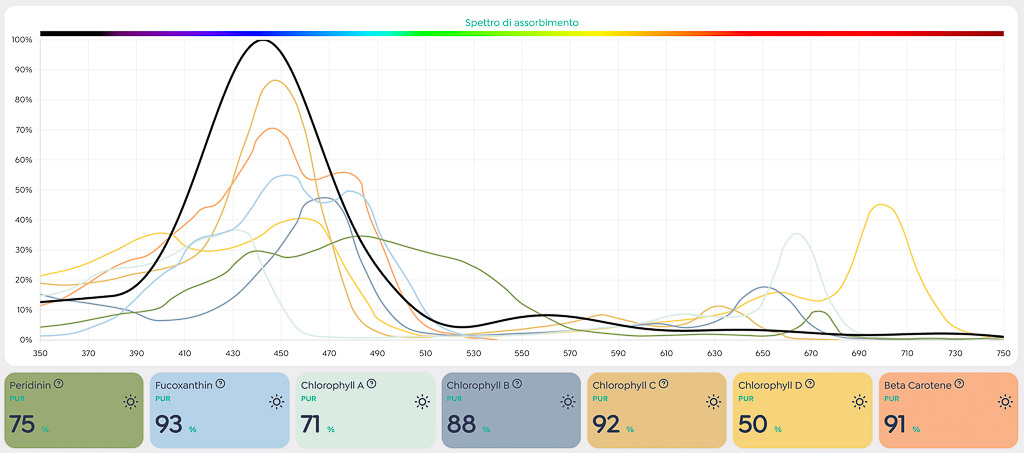
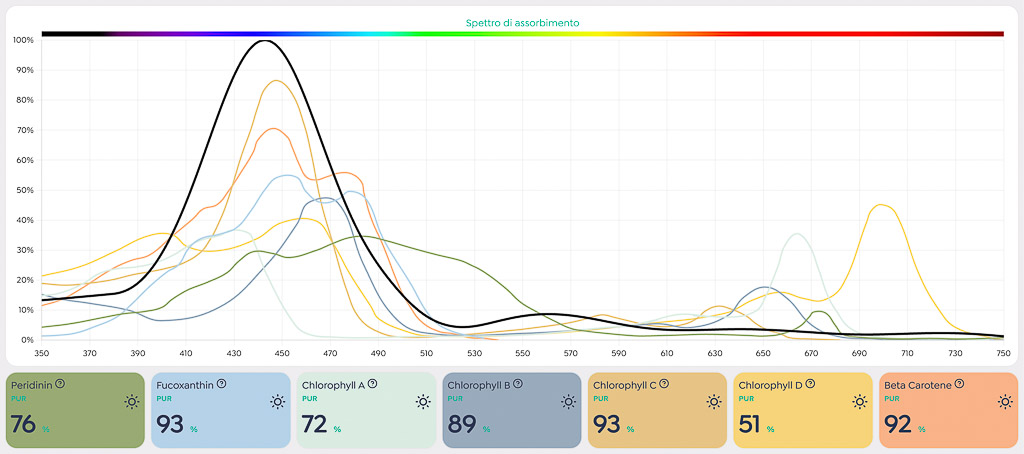
| Pigments | a 17 cm | a 37 cm | a 57 cm |
| Peridinin | 74 % | 75 % | 76 % |
| Fucoxanthin | 91 % | 93 % | 93 % |
| Chlorophyll A | 68 % | 71 % | 72 % |
| Chlorophyll B | 85 % | 88 % | 89 % |
| Chlorophyll C | 91 % | 92 % | 93 % |
| Chlorophyll D | 47 % | 50 % | 51 % |
| Beta Carotene | 88 % | 91 % | 92 % |
As we can see, the characterization is consistent across all distances, while the impact of each pigment varies significantly depending on the active channel—as confirmed by our measurements, though we chose not to include them here to avoid overwhelming the reader with data.
Channel Values at the Center Across the Three Distances
We also measured the output for each individual channel, only at the center, to give you an idea of each channel’s contribution to total PAR.
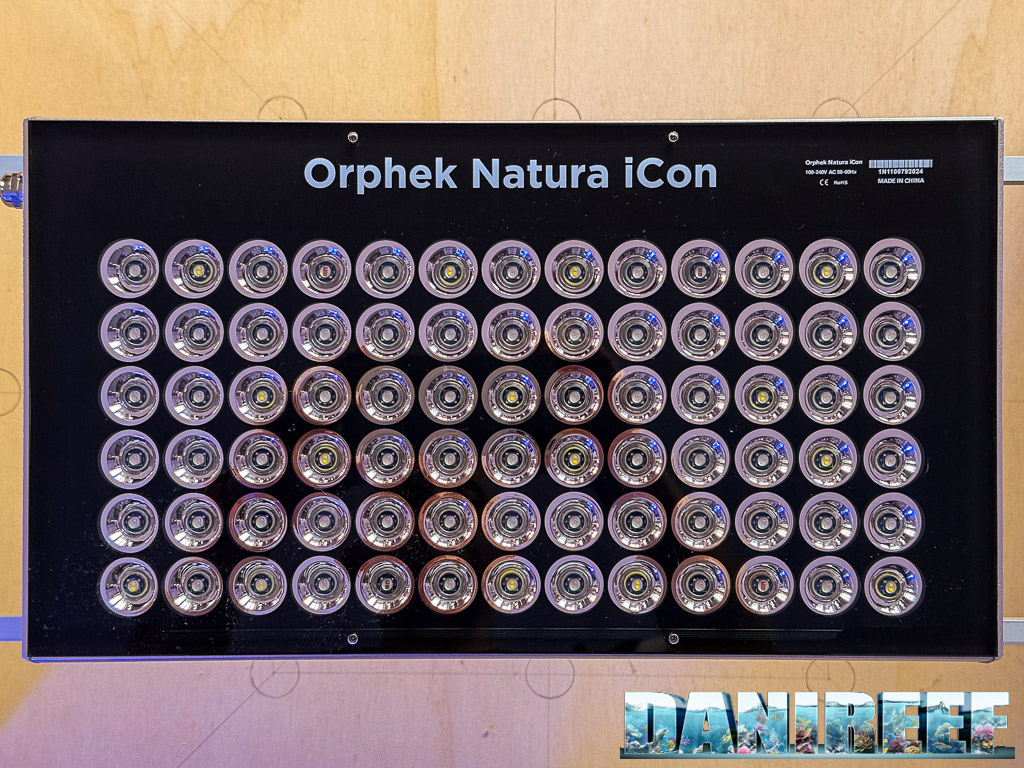
Here are the measured values:
| Distance = 17 cm | % of total PAR | % power consumption | |
| Channel 1: | 368 μmol m-2 s-1 | 13 % | 16 % |
| Channel 2: | 522 μmol m-2 s-1 | 19 % | 16 % |
| Channel 3: | 415 μmol m-2 s-1 | 15 % | 16 % |
| Channel 4: | 602 μmol m-2 s-1 | 22 % | 16 % |
| Channel 5: | 545 μmol m-2 s-1 | 20 % | 18 % |
| Channel 6: | 274 μmol m-2 s-1 | 10 % | 18 % |
So, Channel 4 delivers 22% of the total PAR while consuming just 16% of the total power.
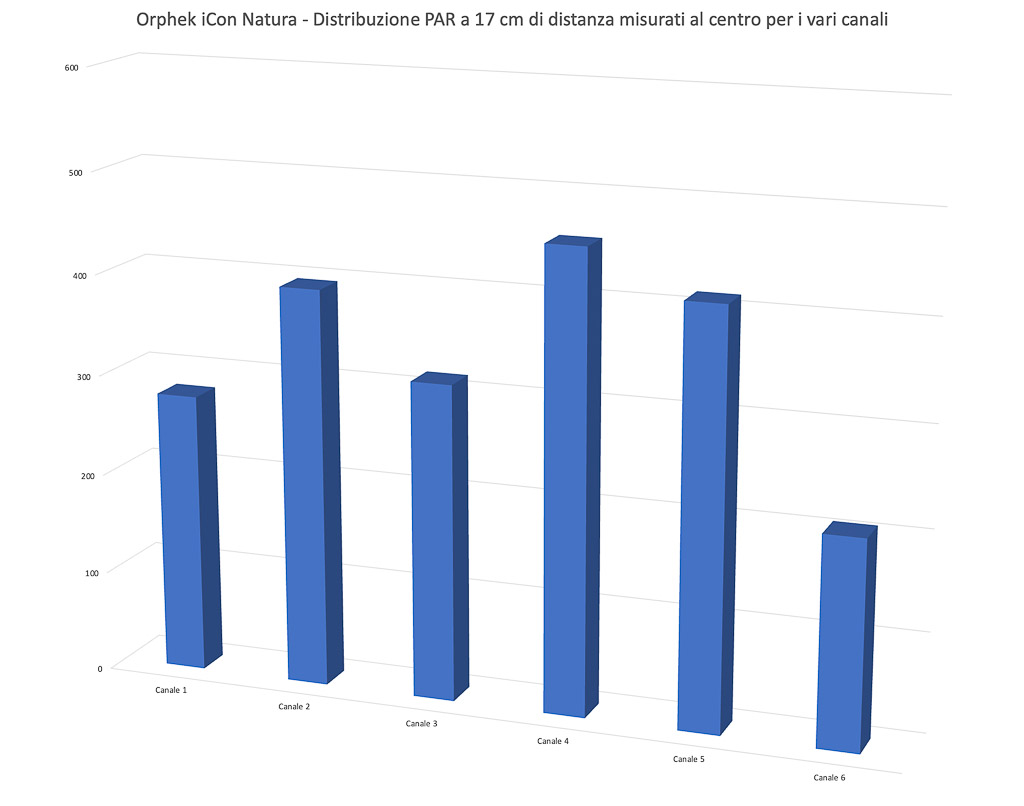
The seven channels are quite balanced overall, though we can identify two distinct behaviors. Channels 2, 4, and 5—mostly in the blue range—are responsible for the lion’s share of the PAR. The other three channels contribute less significantly. The first three channels produce 61% of the PAR while using 50% of the total power; the other three channels also use 50% of the power but produce only 39% of the PAR.
Power Consumption
Instant power consumption was measured using the convenient RCE PM600 tool, which also measures the power factor (Cos φ). The result is shown directly in watts.
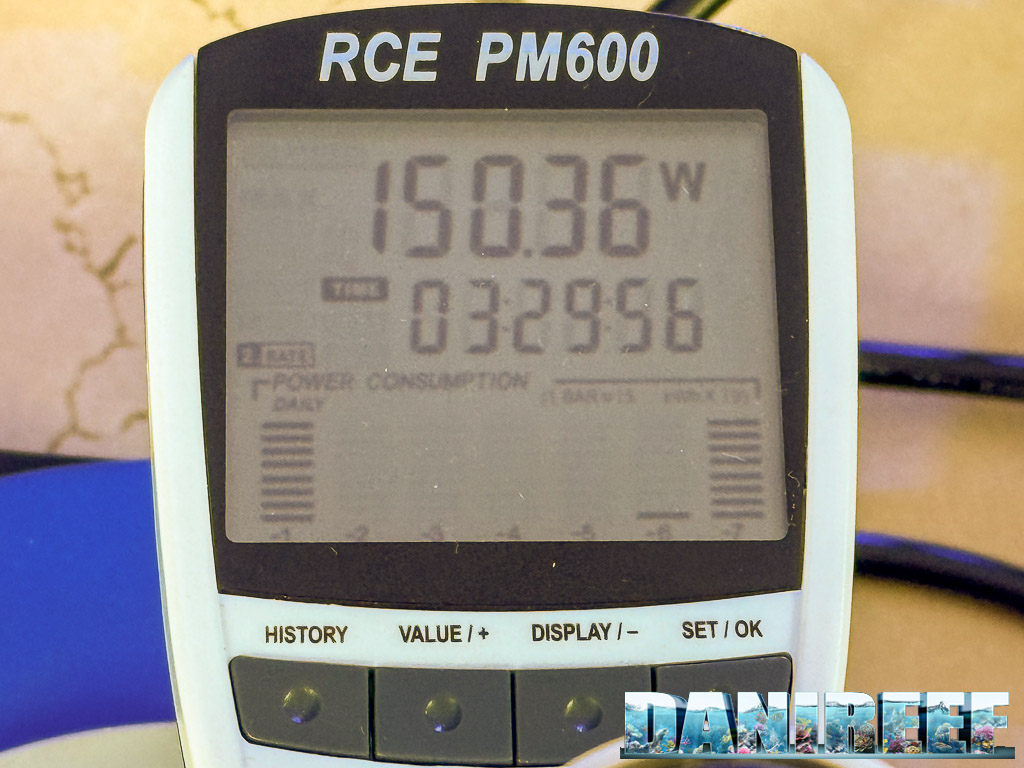
Here we see the maximum power, followed by the power factor.
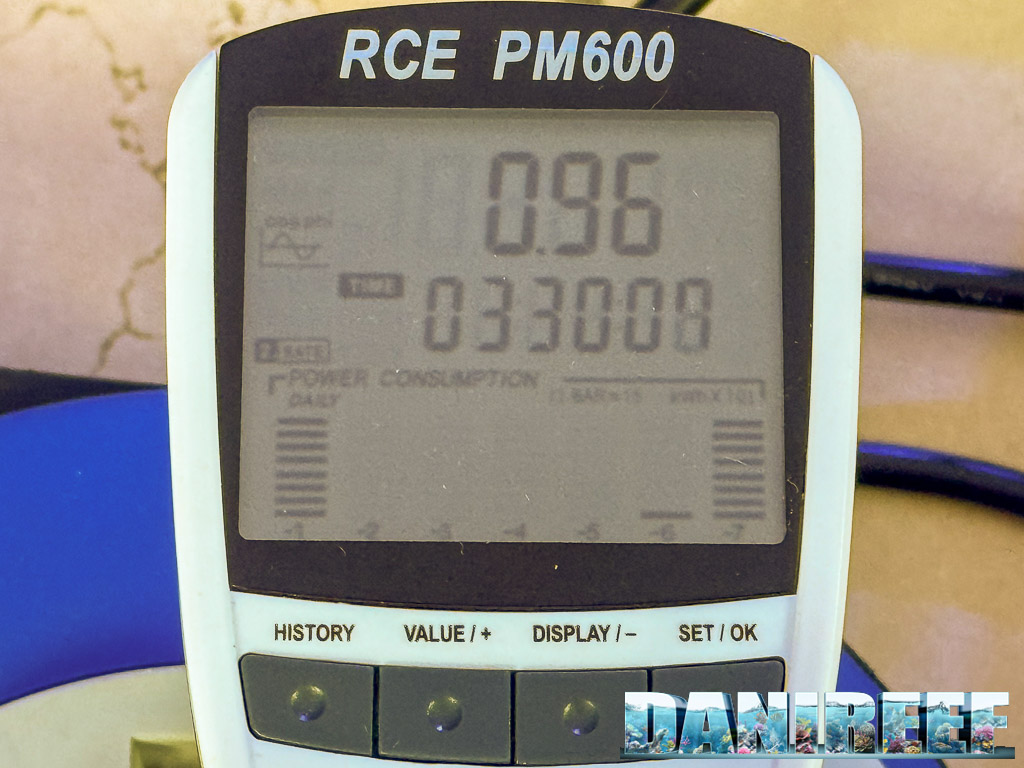
The Orphek Natura iCon consumes 150 watts—exactly as declared by Orphek. Considering it delivers 2032 μmol m⁻² s⁻¹ at 17 cm in the center, we can estimate a peak efficiency of 13.55 μmol m⁻² s⁻¹ W⁻¹, which is, to say the least, a monstrous level of efficiency.
Orphek Natura iCon and Heat Management
The Orphek Natura iCon lighting fixtures feature a hybrid active/passive cooling system that uses two fans controlled by a sensor located on the PCB. In addition to that, the entire external casing is made of aluminum to better dissipate heat.
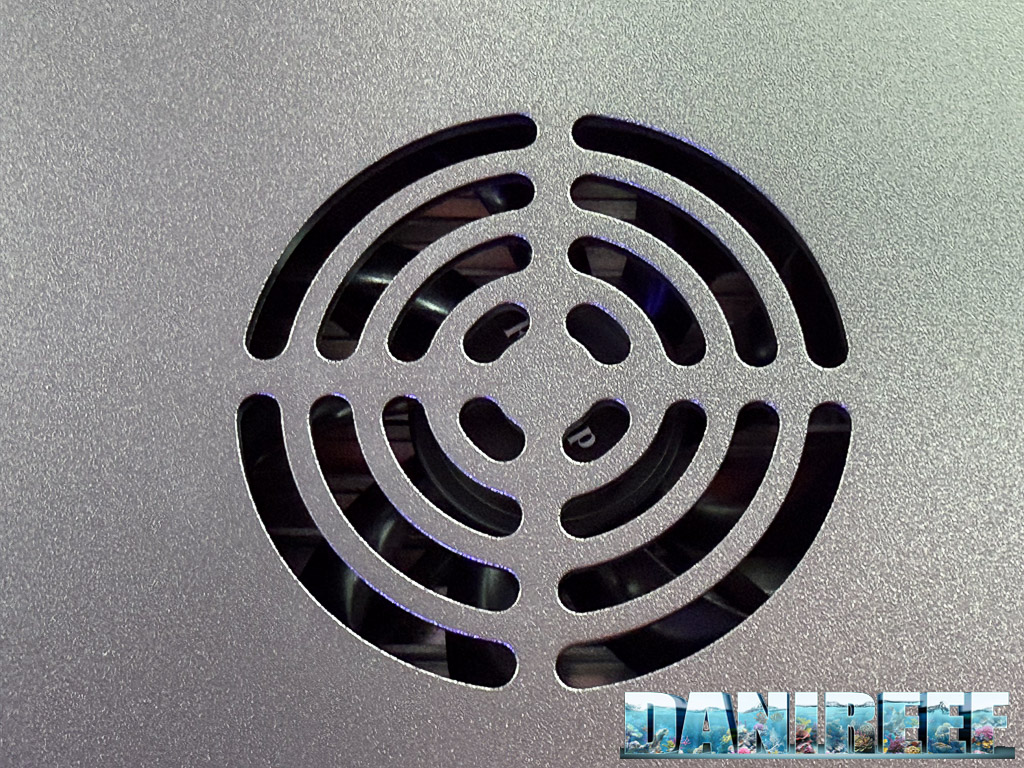
How should we interpret these numbers in the aquarium?
That’s a good question. Initially, we thought we could directly apply these numbers to an aquarium scenario. Then we filled an aquarium with water, immersed the sensor, and repeated some of the measurements. The results caught us off guard, but as we’ve already mentioned in previous articles, we’ll discuss this in a dedicated follow-up article, which we’ll be sure to link below once published.
In short, while the measurements at 20 cm are virtually identical, as you go deeper, the glass reflecting the light and the water itself diffusing it more effectively can result in values that are even double compared to those measured in air. Of course, this is not a parameter that can be standardized, which is why we believe our calculation method is the most accurate and the best for comparing the coverage of different lighting fixtures.
This time, however, thanks to the unique aquascape by Poseidon ArtRocks in our tank, and the ReefTek bridge that allows us to mount any fixture while maintaining the same distances, we wanted to measure the PAR values directly in the aquarium — something we’ll continue to do in future reviews. In the video linked on the first page, you can see how we performed the measurements, while here we’re only sharing the final results.
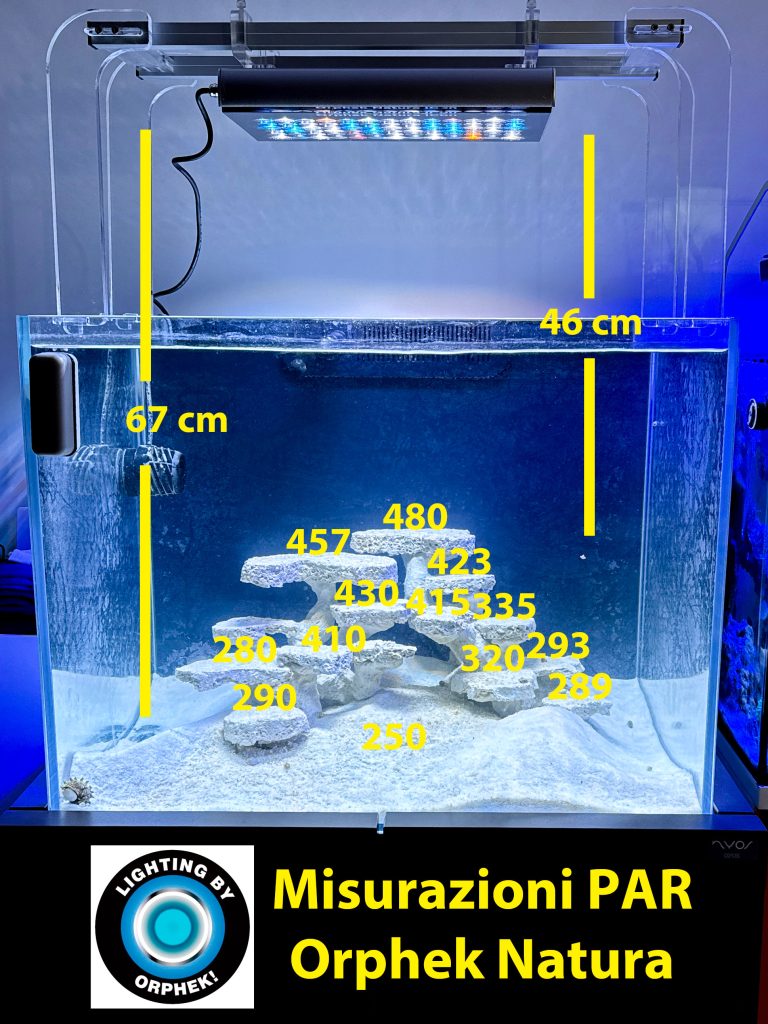
As you can see, despite being quite far from the top of the aquascape — a full 46 cm — the PAR values are extremely high, with an excellent distribution even across the sand bed. But we’ll get into that shortly. What we wanted to highlight here is how the values so far remain consistent.
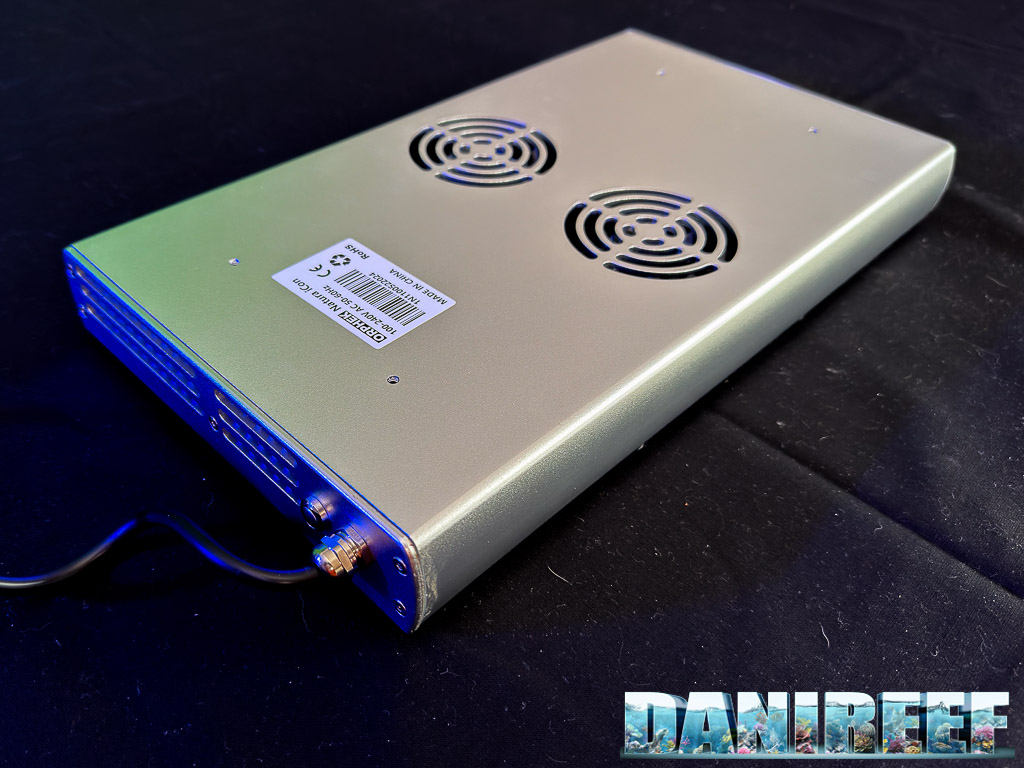
Efficiency is the key feature of this new Orphek Natura iCon.
An outstanding PAR-per-watt ratio and a very, very good energy efficiency per watt. It’s hard to do better with only 150 watts of available power. All of this data shows that these fixtures are perfect for aquariums up to 60 cm wide, a bit stretched for 70 cm — though it’s worth noting that corals won’t be placed directly against the glass, but set back slightly. Of course, we always remind readers that spectrum analysis — which we can’t perform — and long-term durability must also be considered.
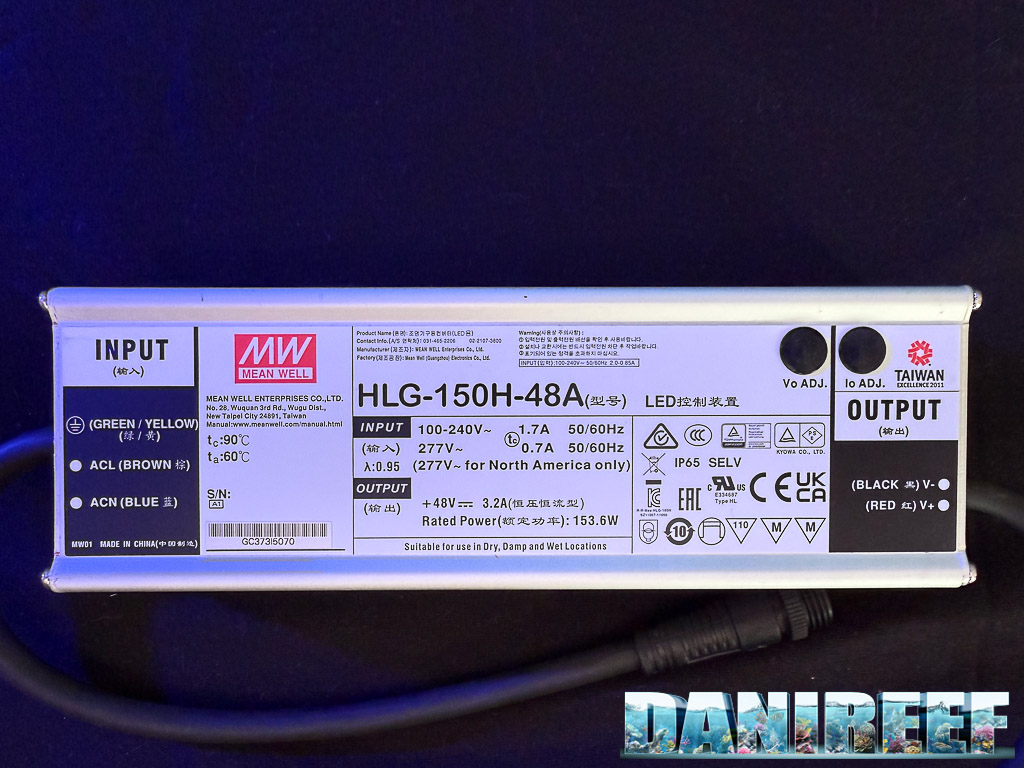
Running Costs
The Orphek Natura iCon fixtures are priced at €1200 and are imported directly by AGP, whom you should contact for updated pricing and availability. As we’ve seen, the power consumption is 150 watts, which results in a cost-per-watt ratio of about €8 per watt.
Final Thoughts on the Orphek Natura iCon
The fixture is very well built and displays impressive efficiency. The moon phase simulation feature is simply amazing — although it really needs to be seen in person to understand how it works.
From an economic perspective, the efficiency is in the upper range compared to other fixtures, but the technical efficiency — that is, the PAR output per watt — is extremely high. The energy output at all three measured distances reaches incredibly high values.
Below is the spectral distribution (PPFD) at various depths in clear ocean water. The measured values are:
| 1 m | 5 m | 10 m | 15 m | 20 m | |
| PFFD (µmoli/M2/s) | 1640 | 958 | 618 | 436 | 316 |

So, at 37 cm distance with the Orphek Natura iCon set to maximum output, we recorded 688 µmol/m²/s with the Apogee sensor and 782 µmol/m²/s with the PARWISE PRO. This corresponds to an approximate natural light level found between 6.5 and 7.5 meters below the sea surface — an incredibly high output! This allows for the successful keeping of virtually any coral species. Moreover, as we’ve seen, the values increase further when factoring in the glass reflections, which act like an additional lens.
The PAR values are excellent for tanks up to 60–65 cm wide, suitable for keeping both SPS corals and any other type. Naturally, if you’re aiming for high-demand SPS, the central section is preferable due to the typical drop-off in intensity toward the edges and the angle of the light. The power is strongest near the top of the tank, as expected. As depth increases, the intensity decreases, but coverage expands and remains broad. The fixture is just under 37 cm long, making it ideal for 60 cm tanks or multiples thereof. Two fixtures are perfect for a 120 cm aquarium.
If you have questions, doubts, or curiosities, feel free to leave a comment below the article, or reach out to us on Telegram, Instagram, Facebook, X and YouTube, whichever social platform you prefer. Follow us so you don’t miss any of our news, articles, reviews, and reports. If you need assistance, you’re always welcome in our forum.
Disclaimer: The Orphek Natura iCon fixture used for this review was provided directly by Orphek.








